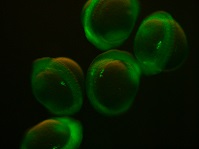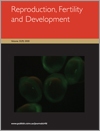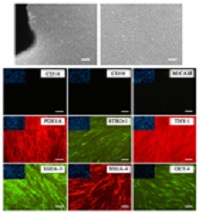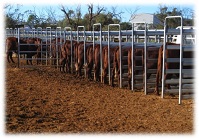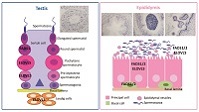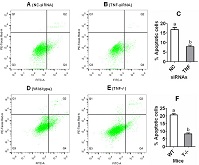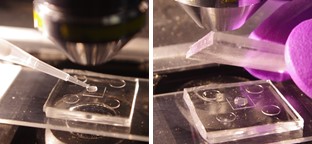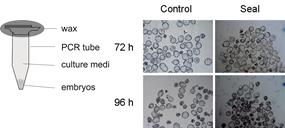Reproduction, Fertility and Development
Volume 32
Number 9 2020
Australian fish populations are declining with few strategies in place to reintroduce animals if a species were to go extinct. A new technique allows conservationists to freeze and store reproductive tissue from fish indefinitely, and then produce new individuals using a surrogate. This review describes the development of this method and the ways in which it could now be used to protect Australia’s vulnerable fish species.
Coculture of human pluripotent stem cells with human feeder cells, rather than conventional animal feeder cells, is more suitable for clinical use. This is the first study to demonstrate that human Caesarean scar-derived feeder cells can be used as a novel feeder cell type for the culture of pluripotent stem cells. Human embryonic stem cells can grow without exogenous growth factor supplementation and may be useful for cell-based therapy in the near future.
Maternal dietary protein intake during pregnancy affects embryo survival and fetal development. Restriction of dietary protein in yearling heifers during the periconception and first trimester periods altered maternal metabolite and hormone profiles during critical periods of development, concomitant with negative effects on embryo survival and early fetal growth. These findings indicate that maternal dietary protein supplementation during the periconception period and early gestation may optimise pregnancy outcomes in cattle.
Characterisation of polyunsaturated fatty acid (PUFA) synthesis in the reproductive tract is important to understanding variations in the lipid composition of sperm membranes. The enzymes responsible for ω-3 and ω-6 PUFA biosynthesis in the testes and epididymis of stallions were analysed at the mRNA and protein level. The findings of this study could provide new advances in equine assisted reproduction.
Research on the role of tumour necrosis factor α (TNF-α) signalling is of great importance for our understanding of the mechanisms by which female psychological stress and its associated corticotrophin-releasing hormone (CRH) elevation affect oocytes. The present results suggest that restraint stress and CRH elevation in females impair oocyte competence through activating TNF-α signalling and that a TNF-α antagonist might be used to ameliorate the adverse effects of psychological stress on oocytes. These data are important for understanding the mechanisms by which psychological stress affects oocytes and for natural and assisted reproduction in humans and animals.
Standardised evaluation of sperm concentration is essential for assessment of sperm quality, AI and cryopreservation. This study evaluated the feasibility of using microfabrication techniques to produce counting chambers for estimation of sperm concentration. The results demonstrated the feasibility of microfabrication methods in creating low-cost standardisable devices to enhance research reproducibility and strengthen interdisciplinary collaborations.
Embryo development has received specific attention as an important subject for research on life in space. This study investigated the possibility of a sealed culture system that could maintain embryo development in space. Using the modified sealed culture system, early stage mouse embryos developed into viable blastocysts.
